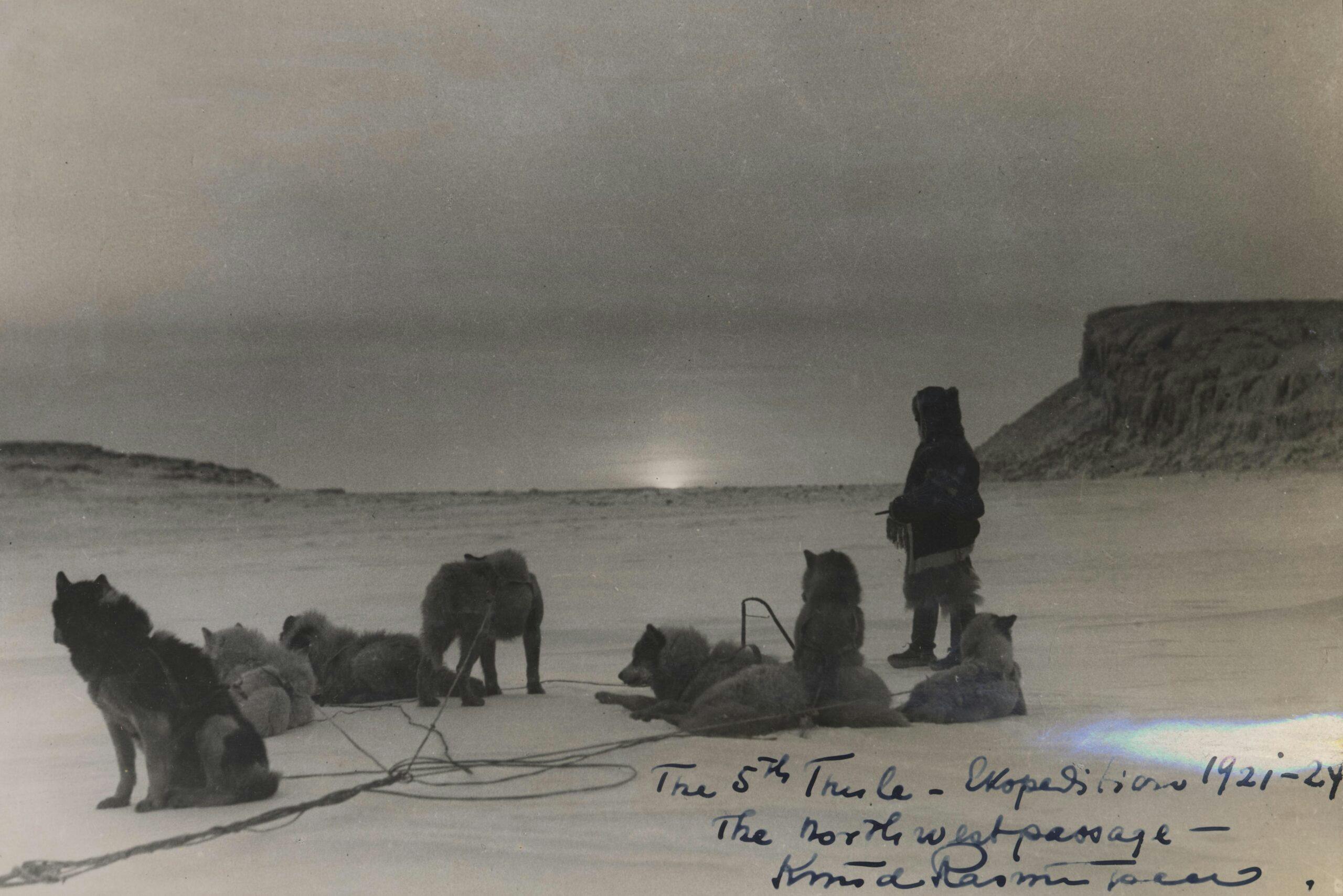Lights and Shadows Collection: Polar Perspectives
From an early original daguerreotype of Arctic explorer Joseph René Bellot to a remarkable aerial image of 1960s Abu Dhabi and iconic photographic ‘firsts’ from Antarctica to Zanzibar, Lights and Shadows – Photographs from the Royal Geographical Society (with IBG), 1851-1962 presents an introduction to the Royal Geographical Society’s collection of over 500,000 historic images. Documenting and observing the world through photography has been a focus of the Society’s own work since the 1880s, when John Thomson was appointed as the Society’s official ‘Instructor of Photography’. Thomson referred to the medium as ‘the absolute lights and shadows of all things seen and that are of value in expanding our knowledge of the world in which we live’.
We start showcasing this collection with four iconic images of polar regions as immortalized by intrepid explorers in the early 20th Century.
Relaying the James Caird across the ice
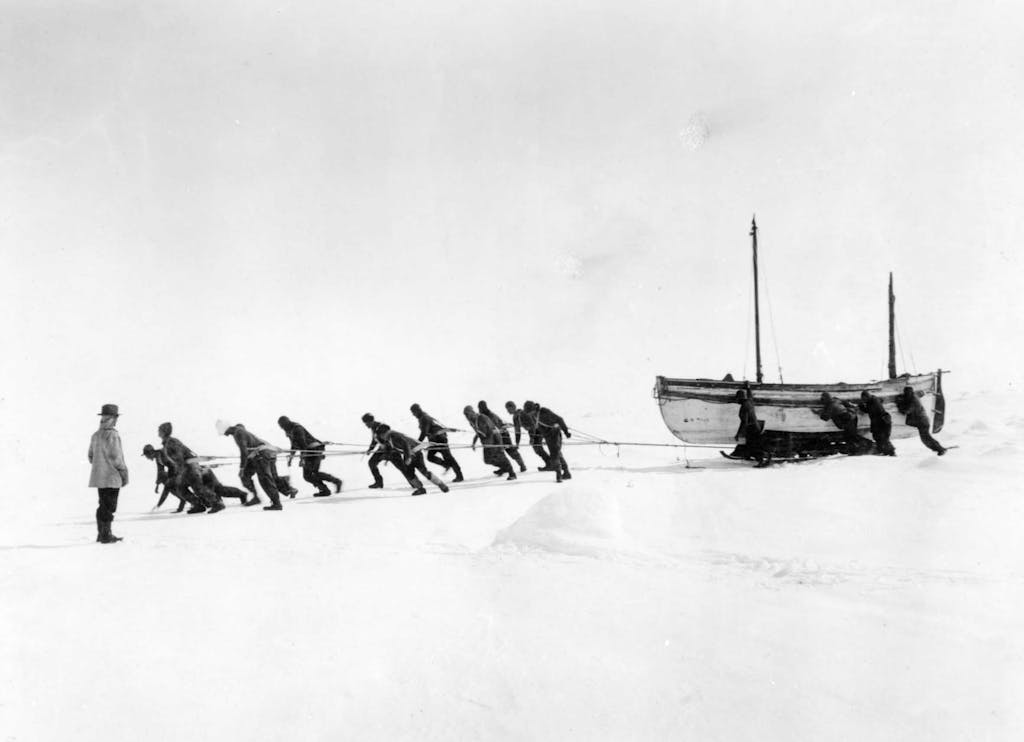
Frank Hurley was official photographer and film-maker for Sir Ernest Shackleton’s ill-fated ‘Imperial Trans-Antarctic Expedition’, (1914-17), better known today as the ‘Endurance’ expedition.
Shackleton’s ship sank in November of 1915 and the 28 men survived on ice and open ocean before he was able to sail from Elephant Island on the James Caird in April 1916 to raise the alarm at South Georgia. Following his successful voyage across the Southern Ocean, all were saved.
Today, the Society houses the pre-eminent collection of original glass and celluloid negatives, rescued by Hurley and which made the journey home across the ice and open water with Shackleton and his men. The images provide us with a dramatic sense of the expedition but also key information on the ice conditions in the Weddell Sea at that time.
The 5th Thule Expedition
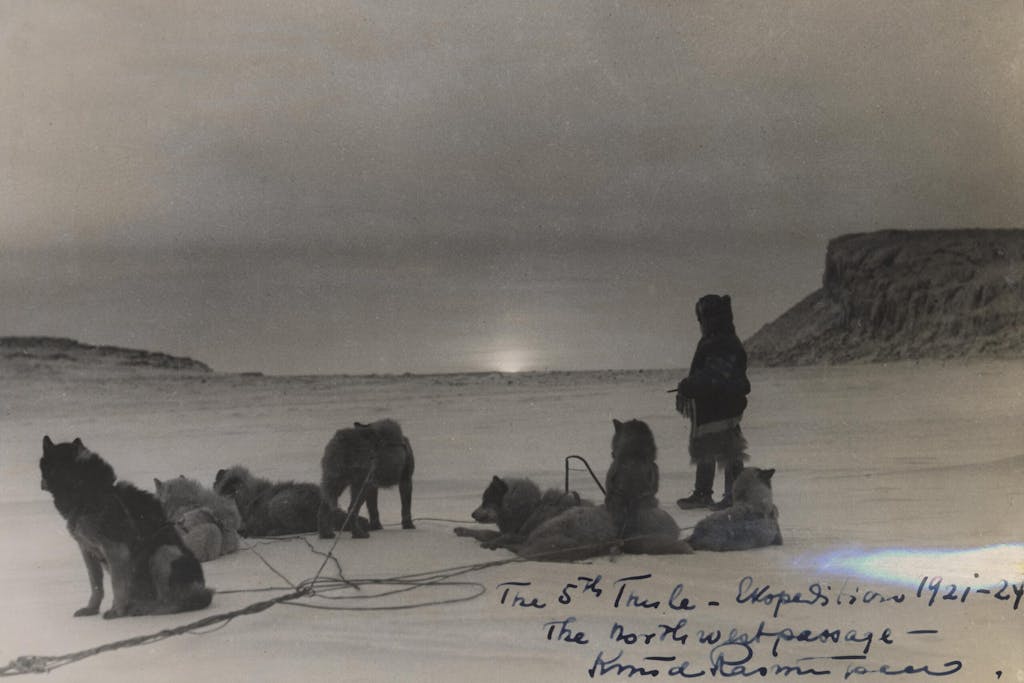
Knud Rasmussen (1879-1933) was a Danish-Inuit explorer and anthropologist. His influential work in studying the people of the High Arctic, their language patterns, migration routes and the unifying characteristics of the indigenous cultures of the Arctic, was to provide the basis for modern research study and enquiry.
In 1910 Rasmussen founded a permanent station in Greenland. ‘Thule’ was both a trading centre and a base for later expeditions, including his 5th Thule Expedition (1921-24) in which he planned to document every Inuit community from Greenland to the Bering Strait.
Although he lacked formal training as a linguist, Rasmussen’s detailed observations and notes provide a source of primary data for research, and, in the case of the Canadian Inuit, some of the richest material available for study today, along with his maps, charts and photography.
In the Rigging of the Norge Showing Flags to be Dropped at the Pole
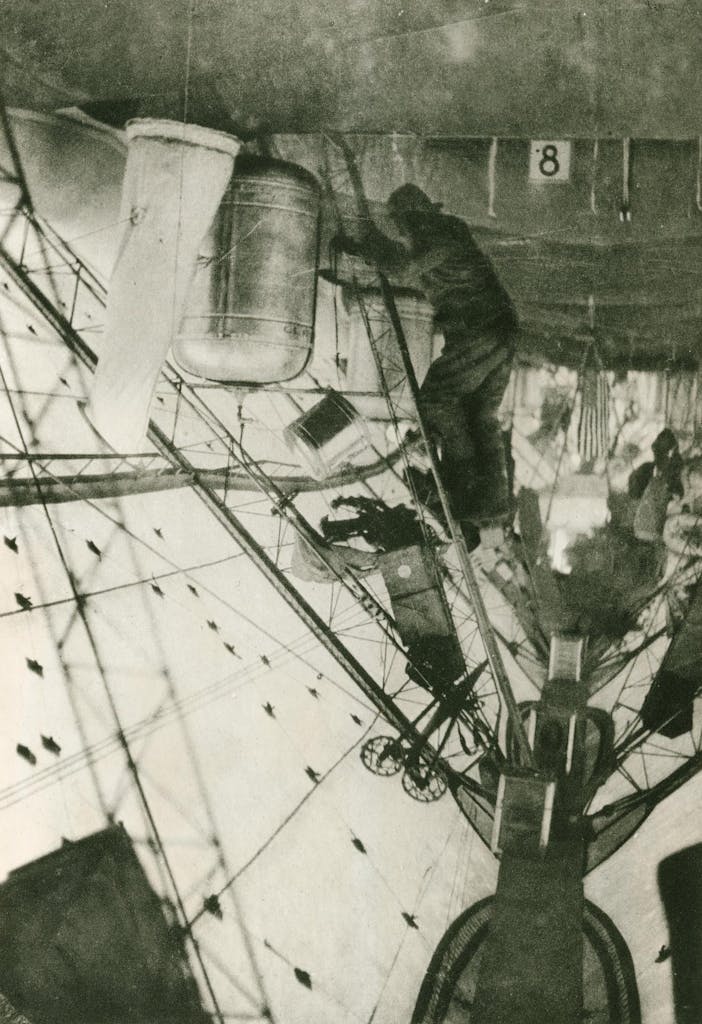
Perhaps best-known as the first human to reach the South Pole in 1911 and to have crossed the Northwest Passage in 1903-06, Roald Amundsen set his sights on the first airship flight across the Arctic, working with aeronautical engineer and aviator Umberto Nobile to create and prepare the Norge, his N-Class semi-rigid airship, for polar travel. The expedition also included the U.S. explorer Lincoln Ellsworth.
The Norge was the first aircraft to fly across the polar ice cap between Europe and North America, reaching the North Pole on 12 May 1926, when Norwegian, American and Italian flags were dropped ceremoniously from the airship above the ice.
During those inter-war years, the adaptation of this flight technology for Arctic exploration was front-page news in the international press, accompanied by dramatic images from within the hull of the craft.
Grotto in Berg, Terra Nova in Distance
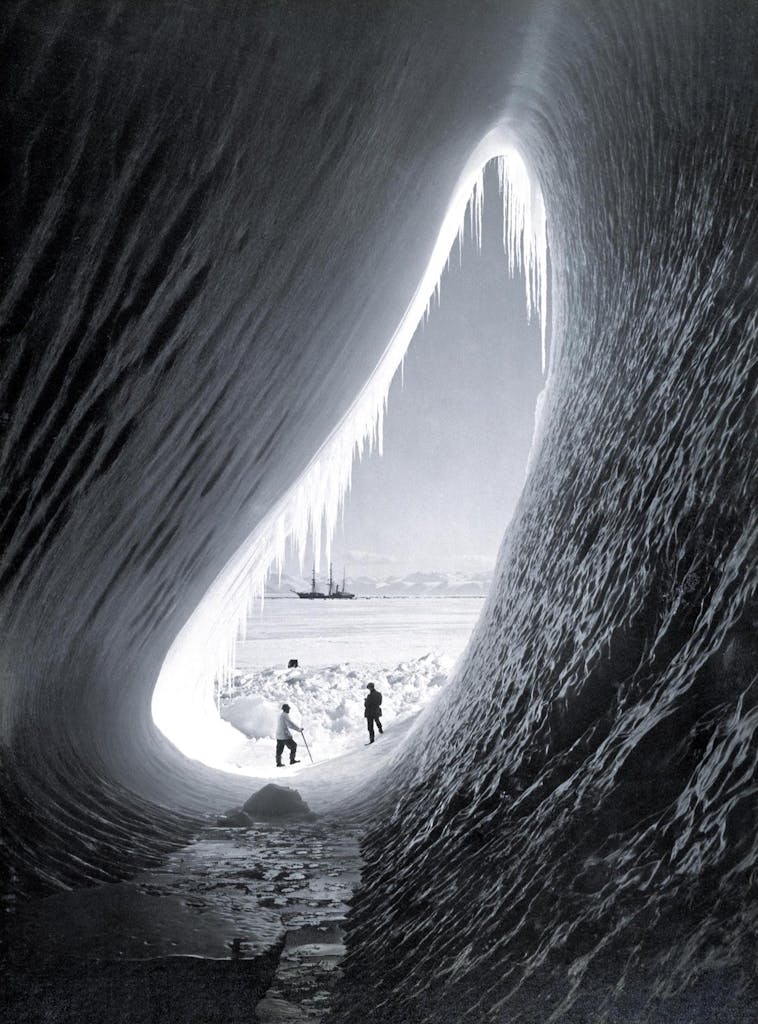
Herbert Ponting was commissioned as the expedition photographer and film-maker for Captain Robert Falcon Scott’s ‘British Antarctic Expedition’, 1910-1913, in part based on his extensive experience of photographing China and Japan. Ponting was the first professional photographer to document and record the Antarctic continent. He also taught Scott and other members of the expedition how to take photographs in order that they might record their attempt on the Pole. Well-versed in the art of processing and developing photographs in situ, using state-of-the-art glass plate technology, Ponting had a painstaking approach to selecting his subjects, both in terms of wildlife and also a striking sequence of polar portraits of members from the expedition team.
Perhaps one of the most iconic polar landscape photographs of all time, this striking image was the result of a sequence of preparatory external and internal photographs of the ice cavern, to achieve a remarkable effect.
In the aftermath of the tragic loss of Scott and his party on their return journey from the South Pole, Ponting dedicated his work to the promotion of his photographic images and films of the expedition to public audiences, including ‘With Captain Scott to the South Pole’ (1913), ‘The Great White Silence’ (1924) and ‘Ninety Degrees South’ (1933).
This article has been produced in collaboration with Silversea’s Corporate Business Partner, the Royal Geographical Society (with IBG), which enriches guests’ expeditions with over 500 years of geographical travel and discovery. Find out more here.
